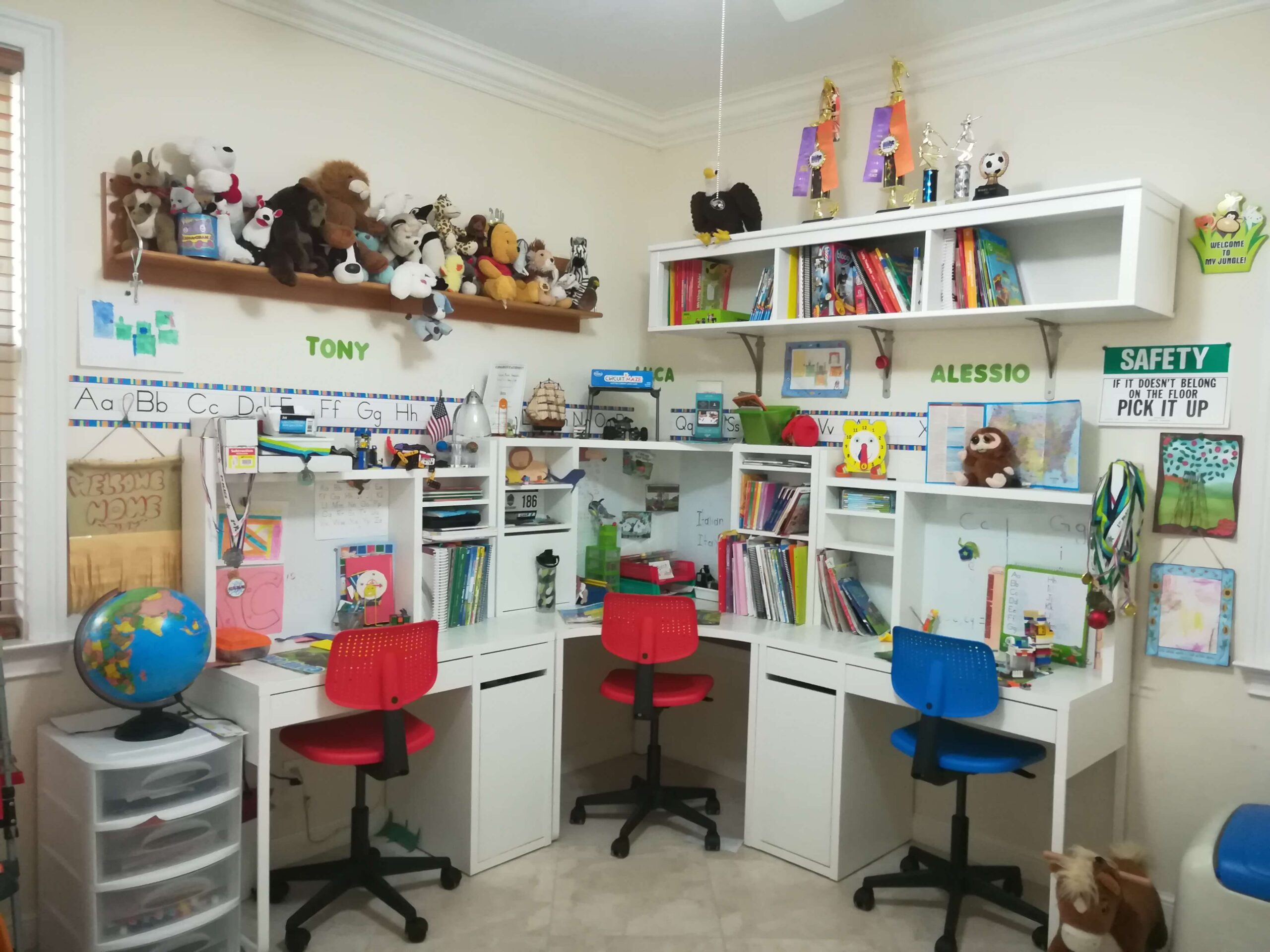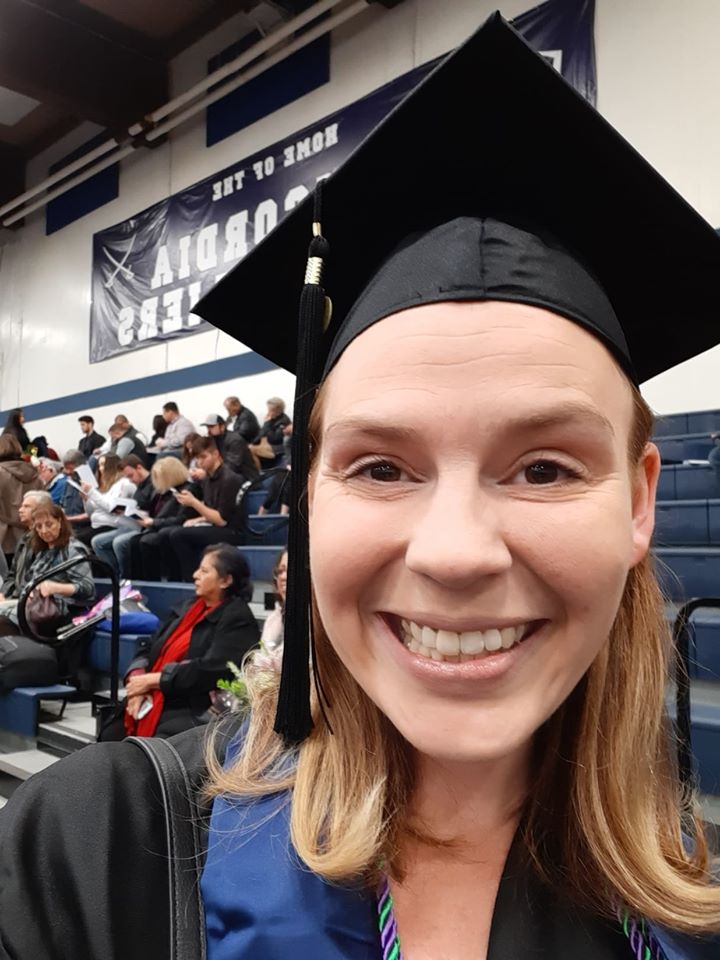
I imagine some people are preparing for a year of homeschooling. We are starting to gear up for this transition as well. Aside from legalities and choosing a curriculum/program, I am starting to research what educational materials I will need. Some families are fortunate enough to have a large area to teach their children, while others may have a small section in their home.
The most important thing I can think of off the top of my head is a space for kids to write. A desk or table will do. If the space does not have storage, I would suggest buying a few pencil cups for varying materials. Many places sell pencil cups, but my favorite place to get them from is Ikea. A 2-pack is $3.99. The pencils, pens, crayons, markers, scissors, and glue-sticks fit into these cups nicely. Here is the link: https://www.ikea.com/us/en/p/dokument-pencil-cup-silver-color-40190932/.
Next, I would suggest a simple, inexpensive three-drawer storage cart. These can be found at Target for around ten bucks. Here is the link: https://www.target.com/p/3-drawer-medium-cart-black-room-essentials-8482/-/A-75666884.
The three-drawer cart can hold 1) blank paper in one section 2) workbooks/worksheets in one section and 3) completed work/work to save, in the last section.
Another important necessity is writing tools. I started looking for variety packs of pens and pencils and found an awesome “Back to school bundle box” on Amazon. The box comes with filler paper, folders, index cards, pens, and pencils for $32. Here is the link: https://www.amazon.com/School-Pencils-Paper-Supply-Bundle/dp/B00ZY6T2UO.
Beyond pens and pencils, crayons and markers are also a necessity for students in most grade levels. Other useful items for homeschool are glue, tape, stapler, stickers, blocks/manipulatives for math, science educational materials, and surface cleaner wipes.
Three other important items to support your curriculum are 1) workbooks and 2) reading books and 3) educational “classroom” posters. For workbooks according to grade level, I would recommend “Rainbow Resource Center”. Here is the link: https://www.rainbowresource.com/category/368/COMPLETE-WORKBOOKS—BY-GRADE.html.
This website offers workbooks for students K-12.
Reading books can be found many places online and in-store. There are a ton of choices. One good website I found was simply called, “Kidsbooks.com.” Here is the link: https://kidsbooks.com/.
Lastly: educational posters. I would highly recommend Lakeshore learning for this category. Lakeshore Learning is a wonderful, local school supply store that we have here in Oregon. It is in Lake Oswego. They are open in-store and available online as well. They have a great variety of educational posters that relate to many different subjects. Here is the link: https://www.lakeshorelearning.com/products/classroom-decorations/posters-charts/N/2463492293/.
Fun things to consider if possible is a “healthy snack station,” a radio/music player of some type, and a computer/iPad/kindle for educational videos. Something else to consider, depending on the students age, is some type of “calm” area. Many teachers that I know swear by their “calming corner.” A “calming corner” is essentially a space a student can go to when they need a second to regroup, calm down, think quietly, reflect, etc. It is usually a space that is away from their usual working space. The space is usually filled with pillows, a comfortable seat, etc. To read more about this idea, here is a link: https://www.socialemotionalworkshop.com/2018/08/make-calm-corner-work/
The materials needed for homeschooling will depend on the student’s grade level, the program/curriculum, and the parent/caregiver’s level of involvement. Aside from needed materials, parents should support their child’s interests if possible. If a student enjoys art, indulge in more art materials than needed. If a student is extremely interested in science, try to splurge on some home-science tools and lab kits. Organization will likely help your homeschooling situation, so aim to clearly label and sort materials if possible. I would also suggest striving to create a physically comfortable environment for you and your child so that you guys can work for long periods of time.
I know this all sounds easier said than done. This will likely be a confusing transition for many of us (parents and kids!). Making an area of our home look and feel like a typical classroom might help the transition a bit. Familiar items and a routine will likely help all of us to get through these tough days ahead.
Best of luck to you all in creating your “in-home classrooms.”

Stephanie McCoy was born and raised in Portland, Oregon-where she still lives. She recently graduated with a Master’s in Education degree from Concordia University. In her free time: she likes to read and write, get outdoors, embrace her kiddos and husband, and watch travel documentaries.
